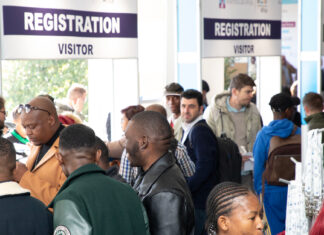Government is ramping up migration to digital terrestrial television, Communications Minister Nomvula Mokonyane said at a briefing on Friday.
News24 reported that the Free State province will be the first to be switched off from the current analogue TV system. The process is expected to be completed by the end of the year.
But what does the term digital migration mean, and why can’t South Africans keep their current analogue TVs? What is a set-top box, terrestrial TV and spectrum?
Fin24 spoke to Andrew Fraser, who was involved in television manufacturing for nine years before becoming an independent marketing consultant, to unpack the issue.
Fin24: What is terrestrial TV?
Andrew Fraser (AF): Terrestrial means on the ground – so it’s got antennae on the ground that broadcasts a signal at ground level, kind of “line of sight broadcast”. In Johannesburg for example, the Brixton tower has a whole lot of antennae on it which broadcasts radio and television signals -those signals reach the horizon, so each broadcast station can transmit to the horizon.
Terrestrial TV would be the old SABC television we’ve had since the 70s. There are a whole lot of towers scattered across the country which broadcast the free-to-air analogue channels.
Fin24: What is satellite television?
AF: Satellite television works by bouncing a signal from a satellite down to your house. To receive the signal you need a dish pointed directly at that satellite. The big advantage of satellite television is that you have one satellite that covers the whole country. You don’t need to put up a whole lot of towers all over the place. It’s a very efficient solution. But the person who uses it needs a whole lot of equipment – like a dish to receive the signal and a box to decode the signal.
Fin24: Why is migration necessary?
AF: The analogue television signal is basically technology from the 1940s, it is not very efficient. It uses a lot of radio spectrum, a lot of bandwidth to transmit the signal. It works fairly well, but it uses a lot of radio space, which is limited. Some spectrum is set aside for radio, TV, WiFi, and Bluetooth – all these radio frequencies need space on spectrum. Analogue uses a big chunk of spectrum which is not very efficient. Government has put forward DTT as a solution for this. This system allows for more information to be put down, using the same amount of space. For example, instead of having one channel with analogue, you can get 12 to 14 different channels in the same space with DTT. This is very valuable- because there is a shortage of spectrum and it will free up spectrum for a lot of others to use.
Fin24: What is the digital dividend?
AF: The digital dividend is the amount of spectrum which is freed up for other things. The people most concerned about it are the mobile phone operators, they desperately need more spectrum. Also, the frequencies that TV operates in are very good for different types of communication because the signals travel a long way and penetrate very far, they are particularly good for rural communication. Higher frequency signals do not travel very far because they get blocked by buildings easily. Low frequency signals travel further and they go through buildings more easily, very well suited for mobile phones. There’s a big drive throughout the world to move away from analogue to digital for access to these frequencies.
Fin24: Where do set-top boxes fit in this whole thing?
AF: You don’t necessarily need a set-top box, but old televisions can only receive analogue signals. They are not capable of converting digital signals. You need to have some kind of electronics – an aerial to receive the signal and a box to translate it. Very much the same way a DSTV decoder can decode a digital satellite signal, you need a DTT decoder to decode a signal that comes in. New televisions are likely to be able to receive these signals, but older televisions require a box to convert it – those are the set-top boxes.
Fin24: How do you get a set-top box?
AF: When the system was put in place, there was a big concern that people would have to buy the boxes. Government recognised that some people would not be able to afford the boxes and communication is a basic human right. As a result, government said they would provide subsidies for people who could not afford a box. The government used the Universal Service and Access Agency of South Africa to procure the boxes and distribute them. Three manufacturers were appointed and they were supposed to have produced 1.5 million boxes already. Government was going to subsidise 4 million of the boxes, but they cannot afford it and are now considering issuing vouchers to people who can’t afford boxes.
Fin24: What has delayed the migration process?
AF: It’s a combination of ineptness – people who did not know what they were doing, poorly thought-out policies and spectacularly bad decisions made along the way either due to incompetence or corruption involved. It’s a number of things. The process has been badly done. The original date that DTT was supposed to be switched on was 2013. It is now 2018.
Fin24: Will the migration be a good thing?
AF: If it had been done right – and completed when it should have been, then yes it would have been a fantastic thing. It would have been a clean operation. But it has cost the department of communications R10bn and it has not yet been completed. Government spent R1bn for 1.5 million decoders, costing R650 per installation. You could buy a Chinese made DTT set-top box for $5 (about R70). Without putting certain requirements in place, it could have been a fraction of the cost and the switch would have been completed already. It was spectacularly badly done.
*This interview has been edited.















